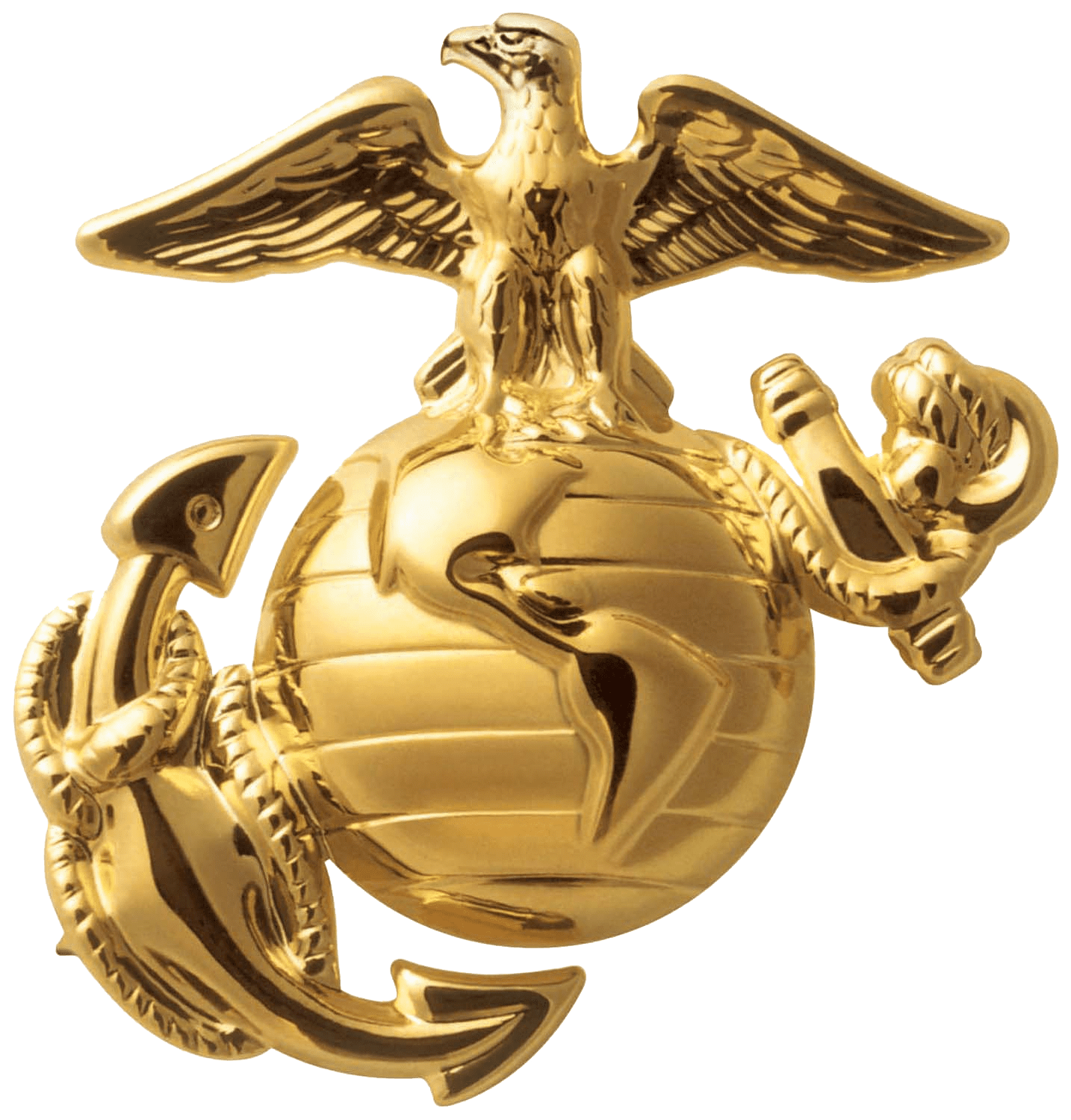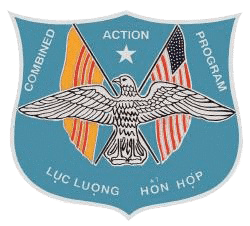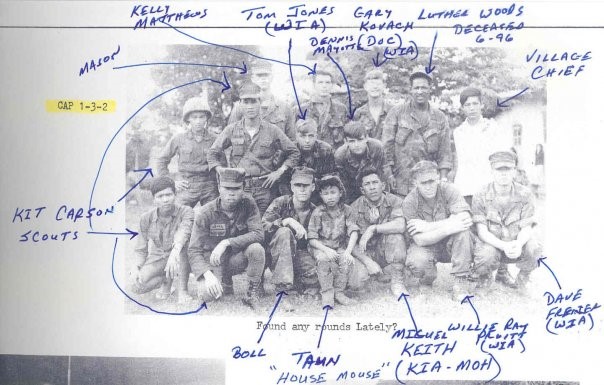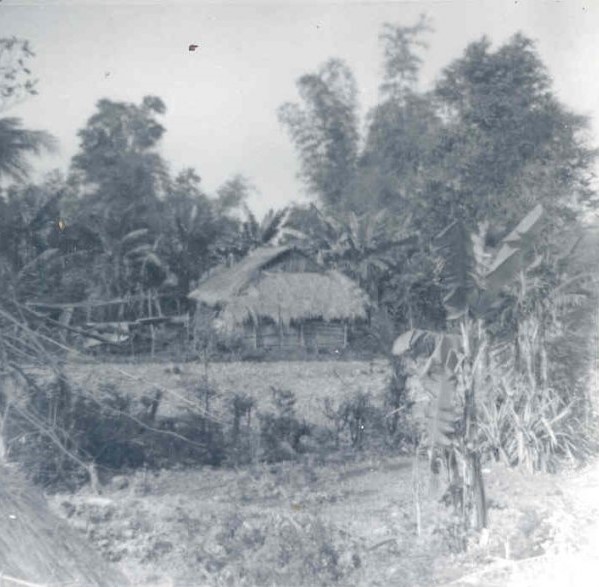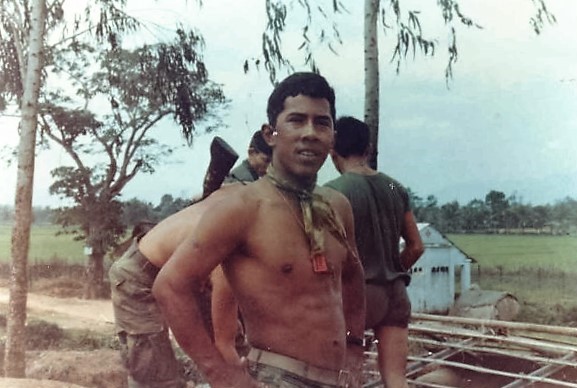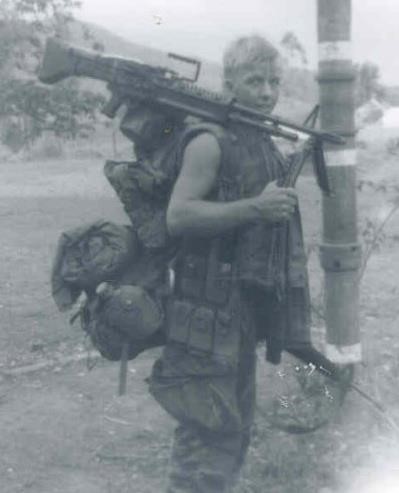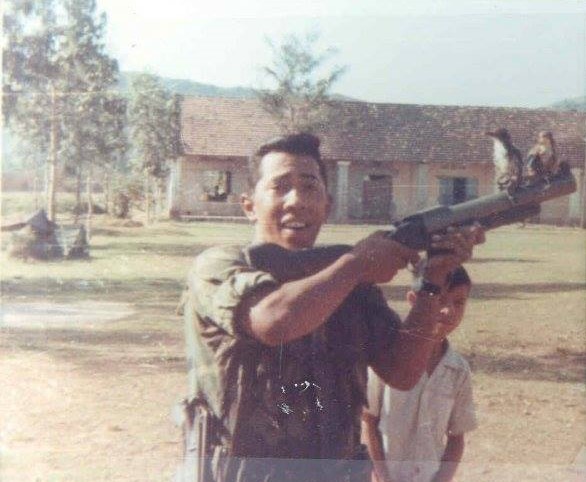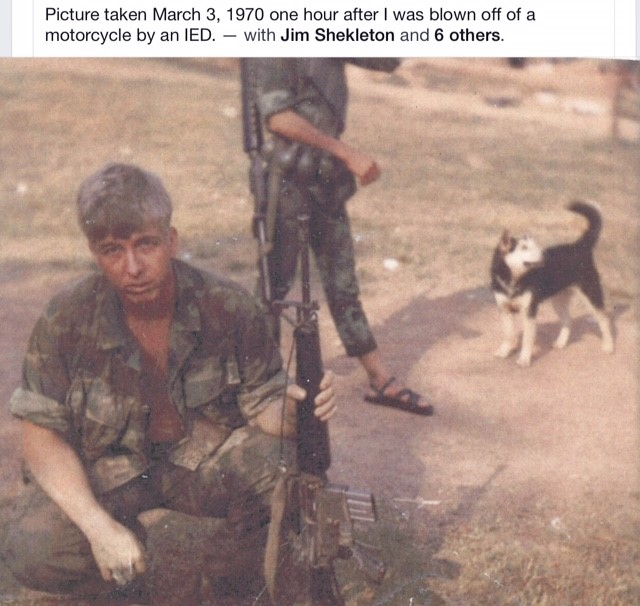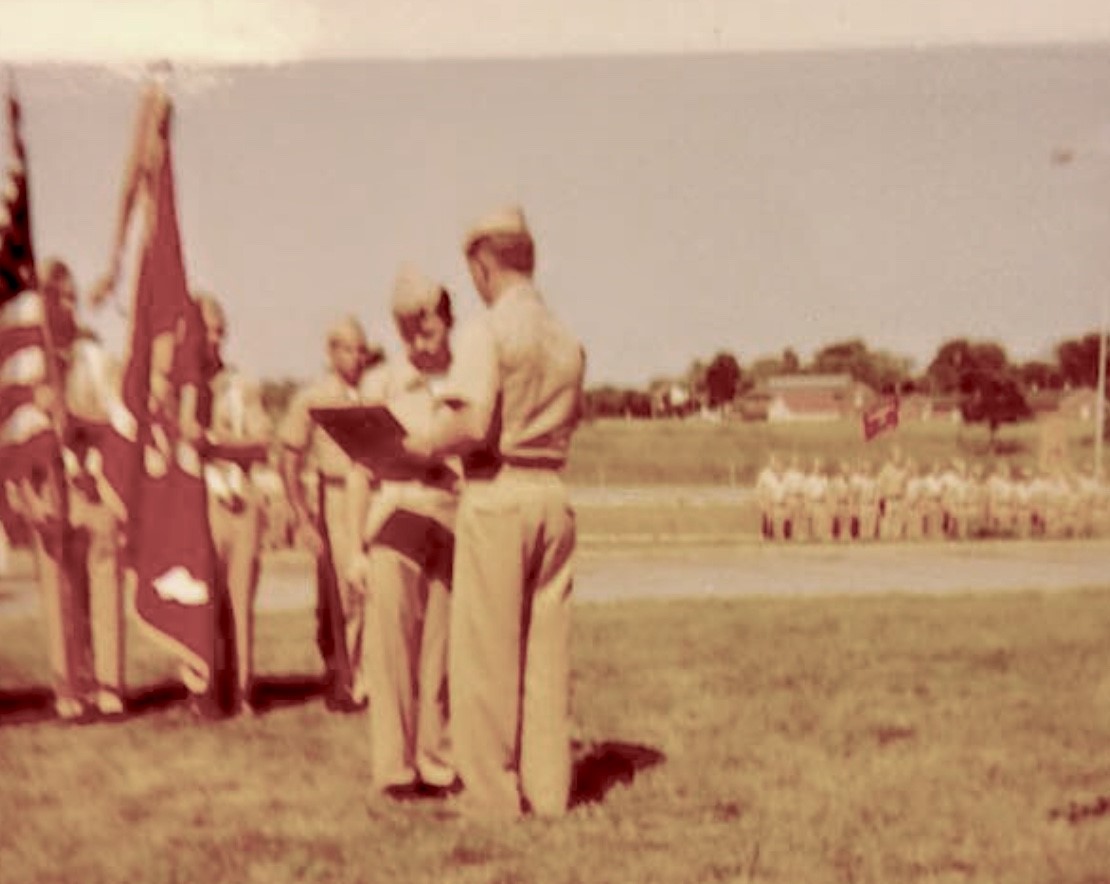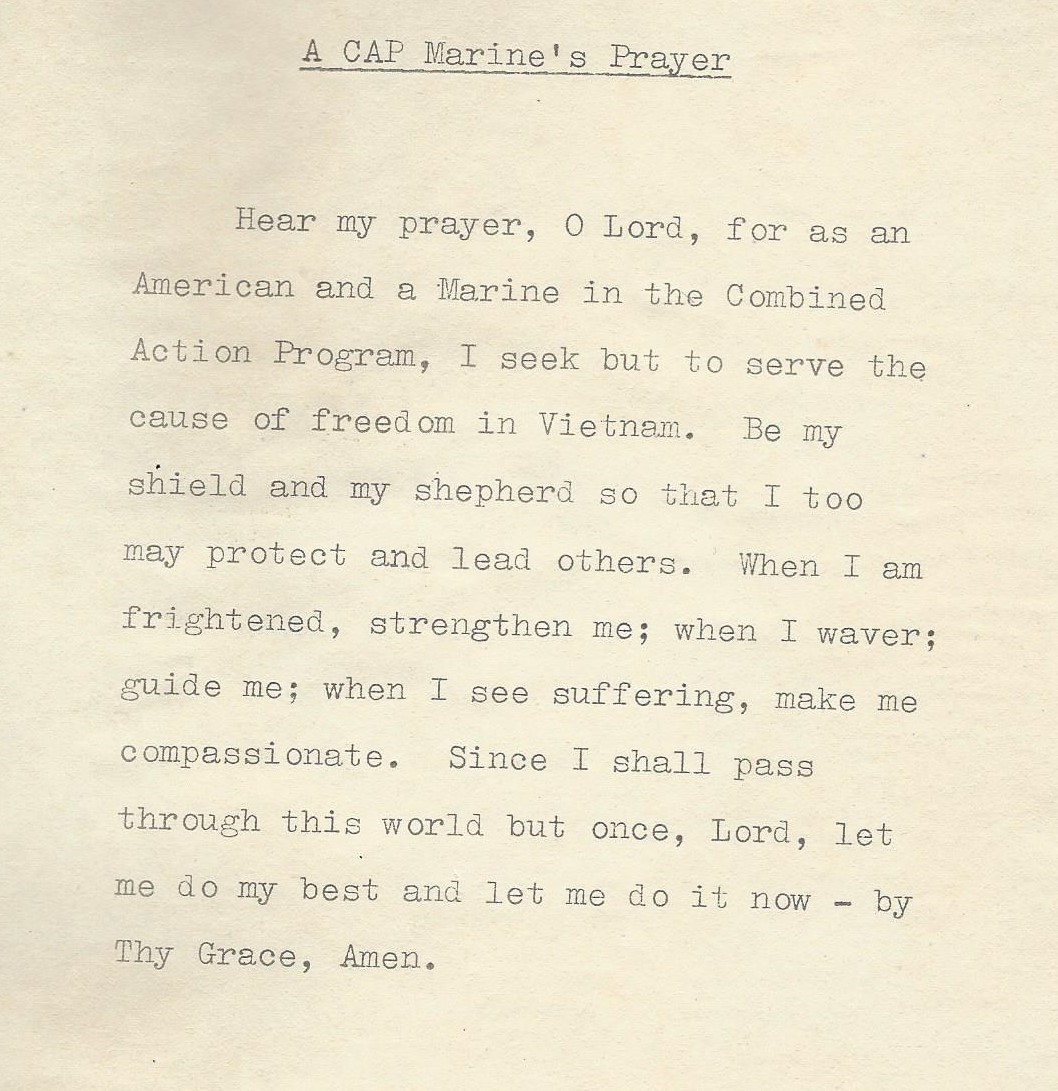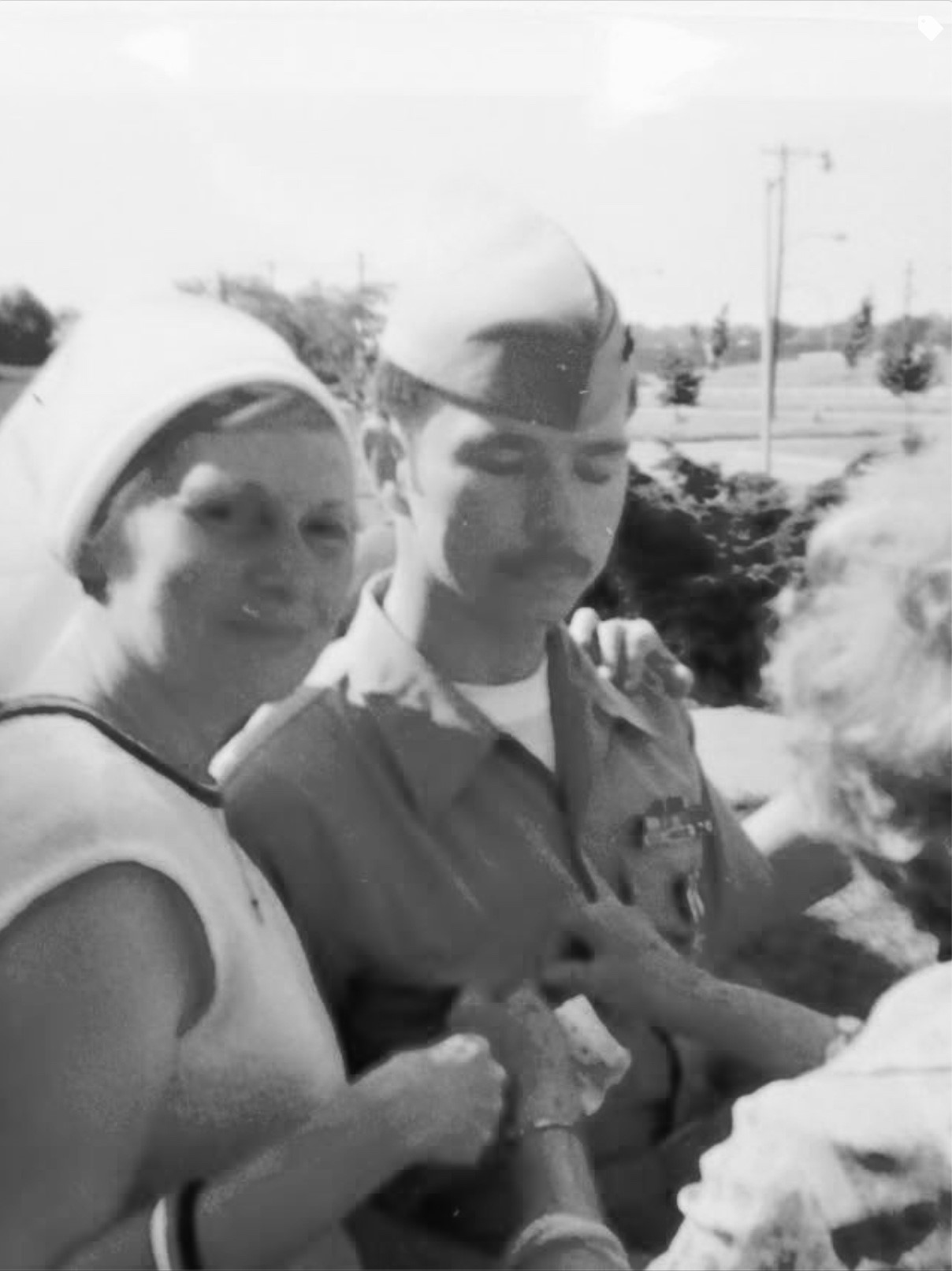CAP 1-3-2
Startup and Early History
The following was provided by Sgt. Robert Holm in an email dated October 20, 2014.
Lima 2 (1-3-2) was originally located at the mouth of the Song Tra Bong River. It was on the Chu Lai side and Lima 4 was on the southern side. Lima 4 was actually my first CAP.
Like many of the earlier 1-3 CAPs, (I think Lima 1 to 6) Lima 2 was started by grunt units. I believe it was Marines from Alpha or Bravo 1/7. I was in Kilo 3/7 in 1966 and we were located north of 1-3-6. It was ironic that after 17 months, I would eventually end up with CAP in the same area where I started out.
By September 1968, the area around 1-3-2 was considered and turned over to the PFs. A few of the more experienced Marines became part of the new Mobile 1-3-2. The rest of the Marines came from some of the other CAPs, and those that were new to 1st CAG. I took a couple with me from 1-3-8. Because of the area we were going into and the fact we were mobile, we started out with a much larger contingent of Marines then a normal CAP. I think it was at least 20+.
Lima 2’s original location

Lima 2’s original location as compared with CACO 1-3’s CAPs as they existed in 1969/70. The yellow highlighted area was CACO 1-3’s headquarters in Binh Son.
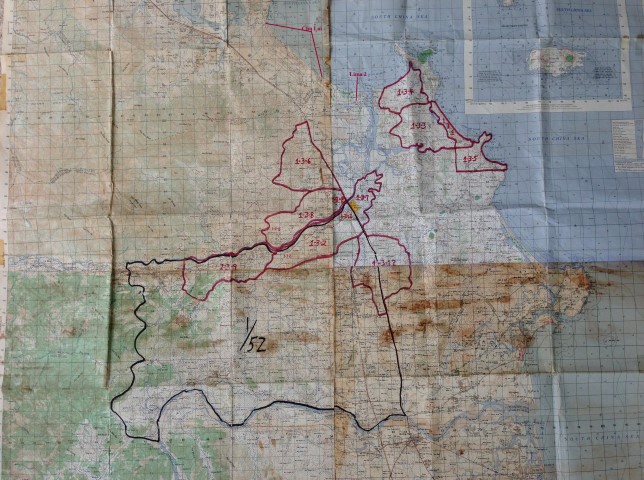
Lima 2’s location after being designated CAP 1-3-2.

CAP 1-3-2 CAP Commanders
All CAP Commanders may not be listed. Time frames are approximate.
- Sgt. Robert Holm, Startup in through December 1968
- Sgt. Smith, Beginning date isn’t known, but he served through about October 1969
- Sgt. Zammetti, October or November 1969 through May 8, 1970
- Cpl. David Frenier, May 8, 1970 through August 1970
- Cpl. Robert Mason, sometime in late 1969 or Spring 1970
Pictures


These pictures were taken in at CAP 1-3-2 in 1970. All are courtesy of Tom Jones, the Marine not the singer, and Dave Frenier.
Corporal Dave Frenier receiving the Silver Star for leading CAP 1-3-2 as a L/Cpl through the night of May 8, 1970, the night elements of the 21st NVA Regiment attacked and were defeated. Pictured with Dave are his aunt and grandmother.
The Battle of May 8, 1970
The 1st CAG Daily Activities SPOT Report for 8 May 1970 is as follows. Entries in parenthesis were handwritten on the report after it had been prepared.
- 080200H May 70
CAP 1-3-2 reported contact with approx one hundred (200) VC/NVA at BS555892. The enemy locations were the following grids BS855591, 556896, 555894, 554892. The CAP patrol base received heavy SAF, RPG, satchel charges, and chicoms from the enemy. The enemy force attacked the PB from the W and using satchel charges and Bangalore torpedoes to breach the barbed wire fence. The enemy was driven back but several were killed in the CAP’s position. Artillery, gunships and spooky were used and at 0230an Army reaction plt was requested. Army reaction force reached the location at 0515H and lined up with the CAP. The contact location was swept on several occasions with the following results: twelve VC KIA, sixteen NVA KIA, one (2) B-40 launcher, seventy eight (120) chicoms, ten (12) satchel charges, two (5) RPG rnds (rockets), assorted 782 gear and misc documents captured. The units involved were elements for the 21st NVA Regt. and 95 B Sapper Bn. One USMC and two (3) PF were KIA. One (8) USMC WIA (non evac), ten (13) PF WIA (E).
Okay, here I go with what I remember about May 8, 1970, the night CAP 1-3-2 was attacked by a large force from the 21st NVA Regiment that was augmented by VC. I hope this proves worthwhile.
MacKnight and I were the two Marines on 9er George on May 8, 1970. We were both in the bunker manning the radio as the relay for CAP 1-3-9.
Your CAP, 1-3-2, had positioned itself such that it didn’t have radio contact with our company headquarters, CACO 1-3. In fact, the only American unit 1-3-2 had contact with was 9er George. MacKnight and I were your radio relay that night.
Sometime during the night, I want to say around 0200, the enemy attacked 1-3-2. The enemy substantially outnumbered CAP 1-3-2, including the Popular Forces platoon associated with the CAP.
The contact was heavy right from the start, and as I remember it, the CAP Commander wasn’t able to respond. I don’t remember MacKnight or I ever communicating with him. He was there, but must have gone into shock or something. I remember some others from 1-3-2 on the net, but they were communicating with you.
You were the Marine we communicated with in 1-3-2 because you unhesitantly took charge of the CAP when it desperately needed competent leadership. Quite a feat for a Lance Corporal or for any Marine for that matter. It seems that all of the communications that we received that were to be forwarded to CACO 1-3 or to Fire Support Base Stinson were from you.
I do remember listening to every word of radio communications that went on with the CAP. I also remember having a difficult time convincing CACO 1-3 that you guys were under attack, not to mention under attack by an enemy force much larger than the CAP. They definitely couldn’t comprehend what you meant by the enemy force being a large one. I remember telling you that CACO 1-3 wanted to know how large the enemy force way. It seemed picky that they came back a couple of times to find out how large when you kept telling me that the enemy was everywhere, not just to the front or side, but everywhere they could possibly be. They just didn’t get it.
No units could get to your location until first light. That included CACO 1-3, CAP 1-3-9, soldiers from the Americal Division, and other PF units. That left the 10 or 12 of you coupled with the PFs to fight for your lives until support could get there in the morning.
MacKnight and I relayed your requests for artillery support to Stinson. You would give us your needs and we would relay it to Stinson. It seems that we spoke directly with Stinson because the situation was that urgent.
We also coordinated air support for you in the forms of helicopters and Snoopy. You directed the helicopters on when and where to illuminate the area. When Snoopy arrived on site, you took over and directed it to where the enemy was. Seems like there was a spotter aircraft on site at some point in time, probably when Snoopy was on site.
Dave, I distinctly remember (and I’m sure MacKnight would agree) you being so in control of yourself and the CAP as a whole. Scared, but in control of yourself to the point that your voice was calm in the midst of all hell having broken loose – a hell that others, including myself, can’t and don’t care to even imagine. To think that a squad of Marines and a platoon of PFs were attacked while in a village without the benefit of any perimeter defense by a much larger element of the 21st NVA Regiment is hard to comprehend and even harder to comprehend when it is taken into consideration that the friendlies lost only a handful and the enemy lost more than 40. You did what few others could have done.
I seem to remember that when daylight came the helicopters started working on the enemy as it fled the area.
The CAP literally survived the attack because of your leadership. I have no doubt about that. None! I don’t mean to take anything away from any of the others, but you were the key to the other Marines living through the night. No doubt about it.
I hope this helps. Please let me know if I missed anything, which I’m sure I did.
Dave, as always, God bless you.
Awards
No unit award was received for the May 8 battle. This may be the result of 1st CAG winding down and not submitting an award for approval by higher levels and/or someone may have dropped the ball somewhere along the line. It’s unfortunate because this was a huge win for the good guys, but evidence of a unit award ever being initiated has never been found.
For Actions on May 8, 1970
but that wasn’t able to be confirmed.)
Medal of Honor

The President of the United States of America, in the name of Congress, takes pride in presenting the Medal of Honor (Posthumously) to Lance Corporal Miguel Keith, United States Marine Corps, for conspicuous gallantry and intrepidity at the risk of his life above and beyond the call of duty on 8 May 1970, while serving as a machine gunner with Combined Action platoon 1-3-2, III Marine Amphibious Force, in action against the enemy in Quang Ngai Province, Republic of Vietnam. During the early morning Lance Corporal Keith was seriously wounded when his platoon was subjected to a heavy ground attack by a greatly outnumbering enemy force. Despite his painful wounds, he ran across the fire-swept terrain to check the security of vital defensive positions and then, while completely exposed to view, proceeded to deliver a hail of devastating machinegun fire against the enemy. Determined to stop five of the enemy soldiers approaching the command post, he rushed forward, firing as he advanced. He succeeded in disposing of three of the attackers and in dispersing the remaining two. At this point, a grenade detonated near Lance Corporal Keith, knocking him to the ground and inflicting further severe wounds. Fighting pain and weakness from loss of blood, he again braved the concentrated hostile fire to charge an estimated 25 enemy soldiers who were massing to attack. The vigor of his assault and his well-placed fire eliminated four of the enemy soldiers while the remainder fled for cover. During this valiant effort, he was mortally wounded by an enemy soldier. By his courageous and inspiring performance in the face of almost overwhelming odds, Lance Corporal Keith contributed in large measure to the success of his platoon in routing a numerically superior enemy force, and upheld the finest traditions of the Marine Corps and of the U.S. Naval Service.
Action Date: May 8, 1970
Service: Marine Corps
Rank: Lance Corporal
*Posthumously
http://projects.militarytimes.com/citations-medals-awards/recipient.php?recipientid=2395
(1) while engaged in an action against an enemy of the United States;
(2) while engaged in military operations involving conflict with an opposing foreign force; or
(3) while serving with friendly foreign forces engaged in an armed conflict against an opposing armed force in which the United States is not a belligerent party. There must be no margin of doubt or possibility of error in awarding this honor. To justify the decoration, the individual's service must clearly be rendered conspicuous above their comrades by an act so outstanding that it clearly distinguishes their gallantry beyond the call of duty from lesser forms of bravery; and it must be the type of deed which if not done would not subject the individual to any justified criticism. The deed must be without detriment to the mission of the command or to the command to which attached.http://www.marines.mil/Marines/CombatAwards.aspx
Silver Star

The President of the United States of America takes pleasure in presenting the Silver Star to Corporal David E. Frenier, United States Marine Corps, for conspicuous gallantry and intrepidity in action while serving as Assistant Platoon Commander of Combined Action Platoon 1-3-2, III Marine Amphibious Force in connection with combat operations of 8 May 1970, while in the Republic of Vietnam. During the early morning hours of 8 May 1970, while Corporal Frenier's platoon occupied a night defensive position adjacent to the village of An Diem in the Binh Son District of Quang Ngai Province, the Marines and popular Forces soldiers came under a vicious ground attack from a numerically superior North Vietnamese Army force comprised of approximately 150 soldiers, supported by intense automatic weapons and rocket-propelled grenade fire. Reacting instantly, Corporal Frenier quickly assessed the tactical situation. Realizing that the size of the hostile unit presented his platoon could well become untenable; he requested supporting illumination and artillery fire. Finding that the terrain features prevented him from adequately observing hostile enemy targets, he unhesitatingly left his bunker and ran across the fire-swept terrain to a high point from which he could better observe the area. Although he thus became a target for concentrated hostile fire, he resolutely maintained his dangerously exposed vantage point and calmly adjusted supporting fire with skillful precision, momentarily blunting the impetus of the hostile assault. Returning to the defensive perimeter, he fearlessly moved from one position to another to encourage his men, ascertain their welfare and ensure that all possible avenues of enemy advance were adequately covered by fire. Having noted that some fighting emplacements were becoming short of ammunition, he rushed through the hostile fusillade toward the command post to secure additional supplies but, en route, was seriously wounded in the knee. Despite suffering intense pain, he steadfastly continued to his objective, secured the required ammunition, and, in full view of the enemy soldiers, returned to the defensive perimeter to ensure the re-supply of all positions. Throughout the ensuing protracted battle, he repeatedly disregarded his own safety as he continually traversed the hazardous area to ensure a vigorous defense against the fanatical attackers. By his courage, aggressive leadership, and unwavering devotion to duty in the face of grave personal danger, Corporal Frenier contributed significantly to the defeat of the enemy and upheld the highest traditions of the Marine Corps and of the United States Naval Service.
Action Date: May 8, 1970
Service: Marine Corps
Rank: Corporal
Company: Combined Action Platoon 1-2-3
Division: III Marine Amphibious Force
http://projects.militarytimes.com/citations-medals-awards/recipient.php?recipientid=40182
Silver Star

Action Date: May 8, 1970
Service: Marine Corps
Rank: Corporal
Company: Combined Action Platoon 1-3-2
Division: III Marine Amphibious Force
Silver Star

The President of the United States of America takes pleasure in presenting the Silver Star to Hospital Corpsman Gary S. Kovach United States Navy, for conspicuous gallantry and intrepidity in action while serving as a Corpsman with Combined Action Platoon 1-3-2, III Marine Amphibious Force, in connection with military operations against the enemy in the Republic of Vietnam. During the early morning hours of 8 May 1970, while the platoon occupied a night defensive position adjacent to the village of An Diem in the Binh Son District of Quang Ngai Province, the Marines and Popular Forces soldiers came under a vicious ground attack from a numerically superior North Vietnamese Army force comprised of approximately 150 soldiers, supported by intense automatic weapons and rocket-propelled grenade fire. Reacting instantly, Petty Officer Kovach rushed from one defensive position to another to ascertain the welfare of the fighting men. During the considerable period of time required for him to make his rounds, he was constantly exposed to concentrated hostile fire but, despite the rounds impacting around him, continued his mission until he reached the command post where he could observe the entire area and listen for reports of casualties transmitted by radio. While fearlessly maintaining his vigil, an enemy soldier, who had broken through the perimeter attacked him and, in order to save his own life, Petty Officer Kovach was forced to kill the hostile soldier. Observing a seriously wounded Marine fall directly in the path of a group of advancing enemy, Petty Officer Kovach valiantly braved their frenzied fire as he rushed forward and, with the assistance of a nearby Marine, pulled the man to a location where he could render first aid in relative security. His task completed, he noted that the tempo of the battle had markedly increased and, fearing for the safety of his comrades, he charged through the fire raking the area to the point of heaviest enemy contact. Although painfully wounded himself during this period, on seven different occasions, he pulled casualties to safety across the hazardous terrain and in full view of the North Vietnamese Army soldiers. Throughout the protracted battle, he patrolled the defensive perimeter to ensure that no wounded man remained unattended. His heroic and determined actions inspired all who observed him and were instrumental in saving the lives of several Marines. By his courage, resolute initiative, and selfless devotion to duty in the face of grave personal danger, Petty Officer Kovach upheld the highest traditions of the Marine Corps and of the United States Naval Service.
Action Date: May 8, 1970
Service: Navy
Rank: Hospital Corpsman
Company: Corpsman (Attached), Combined Action Platoon 1-3-2
Division: III Marine Amphibious Force
(1) while engaged in an action against an enemy of the United States;
(2) while engaged in military operations involving conflict with an opposing foreign force; or
(3) while serving with friendly foreign forces engaged in an armed conflict against an opposing armed force in which the United States is not a belligerent party.The heroic act(s) performed must render the individual conspicuous and well above the standard expected. An accumulation of minor acts of heroism normally does not justify the award, but unusual or exceptional cases will be decided on their merits.
Purple Heart

Awarded to members of the Armed Forces of the United States who, while serving under competent authority in any capacity with an Armed Force of the United States after 5 April 1917, has been killed or wounded.
(1) In action against an enemy of the United States.
(2) In action with an opposing armed force of a foreign country in which the Armed Forces of the United States are or have been engaged.
(3) While serving with friendly foreign forces engaged in an armed conflict against an opposing armed force in which the United States is not a belligerent party.
(4) As the result of an act of any such enemy or opposing armed force.
(5) As the result of an act of any hostile foreign force.
(6) As the result of friendly weapon fire while actively engaging the enemy.
(7) As the indirect result of enemy action. (example: injuries resulting from parachuting from a plane brought down by enemy or hostile fire.)
(8) As the result of maltreatment inflicted by their captors while a prisoner of war.
(9) After 28 March 1973, as a result of international terrorist attack against the U.S. or a foreign nation friendly to the U.S.
(10) After 28 March 1973, as a result of military operations while serving outside the territory of the United States as part of a peacekeeping force.
* Posthumously
Tom Jones’s Facebook Page
USNS Miguel Keith
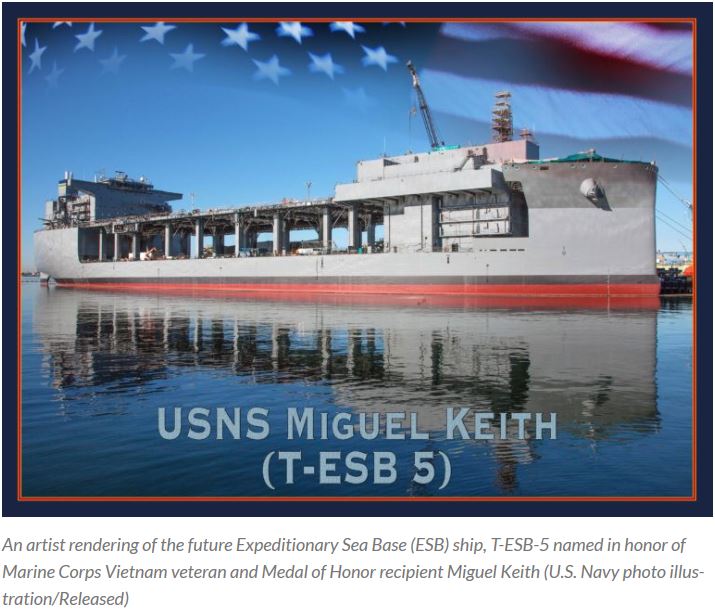
For more information about the USNS Miguel Keith go to
https://nassco.com/press-releases/keel-ceremony-for-usns-miguel-keith-esb-5/

